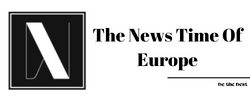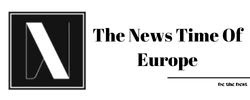A database is a planned grouping of material that has been arranged and is often kept electronically in a computer system.
Databases consist of a number of different kinds of information and data formats: transactional data and integration services such as collaboration, traceability, and loyalty and reward systems, as well as analytics, reporting, and business process automation. IoT involves connecting sensors and devices together to collect data such as data on temperature and weather conditions, traffic patterns, social media activity, and any other type of data about your environment or infrastructure.
Let’s look at each type of database to understand how they relate to IoT.
Visit for more details: Internet of Things
Transactional Data and Integration Services:
The databases that provide transactional and integration services include:
Cloud-based databases. Many businesses, especially in the financial and healthcare industries, rely heavily on cloud-based databases to store and retrieve transactional data.
Many businesses, especially in the financial and healthcare industries, rely heavily on cloud-based databases to store and retrieve transactional data. Document databases. These are similar to transactional databases, but have a more complete set of data formats.
Read this article we wrote: What is NFT and What You Need to Know
Here’s how cloud-based databases solve the issue of connectivity and access:
Access to databases remotely. When you’re connecting from your office in the U.S. to a database in Germany, connecting takes longer and involves more steps. Instead, the cloud-based databases enable you to access your data from anywhere with an Internet connection.
Data integrity. Transactional databases, especially those used for connection to IoT devices, must be fairly high in accuracy because the processes that run on a database must be trusted. With cloud-based databases, it’s easier to test your data reliability before connecting to your IoT data.
Environment monitoring and data storage. All of the data stored in your IoT databases must be available to you when you need it. This is especially critical with IoT devices because these systems may be outside of your business’s own data centers. So it’s important to store IoT data in secure places, such as private clouds.
Cloud-based databases can solve many of the issues with IoT systems. But there are three important limitations that are the biggest impediments to using cloud-based databases in IoT.
Security. Data security is the biggest problem with cloud-based databases, since data security for your IoT applications depends on a strong security policy for storing and accessing data.
Access management. If the cloud-based database that you’re using is shared, you’ll need access to only one cloud-based database. But for most organizations, managing access to data is an ongoing problem.
Communication. Because cloud-based databases allow all of your data and IoT connections to be centralized, you’ll likely need to have communications with the cloud. If you use cloud-based databases with microservices, this issue can be problematic because the communication and connectivity model is uncoordinated. But there are ways to make these challenges work for you.
Cloud-based Databases Can Still Improve IoT Solutions:
Many companies are already using cloud-based databases in IoT systems, and not because they didn’t want to. Instead, they were forced to do so by a lack of connectivity.
In most situations, connectivity is the easiest and most important step you can take to improve the usefulness of your IoT solutions. Before you build an IoT system, take a look at how your current data processes and connections work, and use the cloud-based databases that are available.
First, determine if you already have a direct connection between your database and your IoT device. If so, it may be easy to move the IoT systems to your existing data processing platforms. But if the data processing platform doesn’t have direct connections with your database, you’ll need to decide how much data connectivity you want to have for IoT systems that you don’t control.
Second, look for databases that are well-integrated with your existing systems. Building IoT systems can be difficult, and there are many different IoT platforms that you can use for connecting IoT systems and interacting with databases. Cloud-based databases can be great for connecting your databases and making data connectivity and data storage easier.
Third, see if you have the bandwidth and power to support all of your database transactions. Most cloud-based databases can manage limited transactions, but you may have problems scaling larger transactions. If you don’t have those resources, consider looking for an IoT platform that doesn’t rely on expensive databases.
Final Thoughts:
IoT systems rely on information collected from IoT sensors. But there’s still a long way to go before IoT systems will become truly useful.
Today, most IoT systems still have connectivity problems and have limited or no communication capabilities. This has hampered IoT systems in both manufacturing and other sectors. But it’s not all hopeless. The development of IoT systems is happening at a rapid pace. The development of technologies like cloud-based databases is also going well, and can improve IoT solutions in many areas.
Visit for more Tech News: The News Time Of Europe










0 Comments